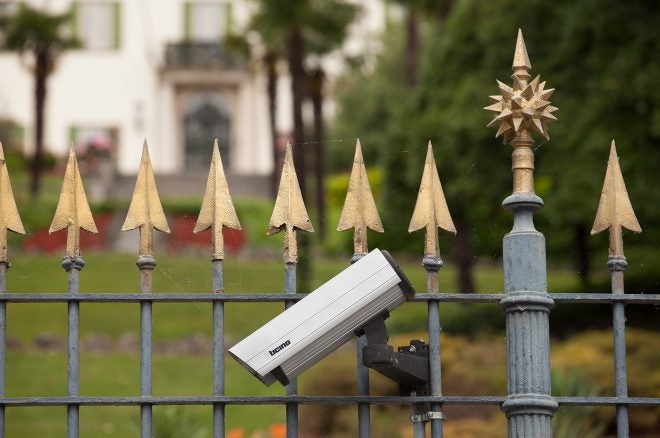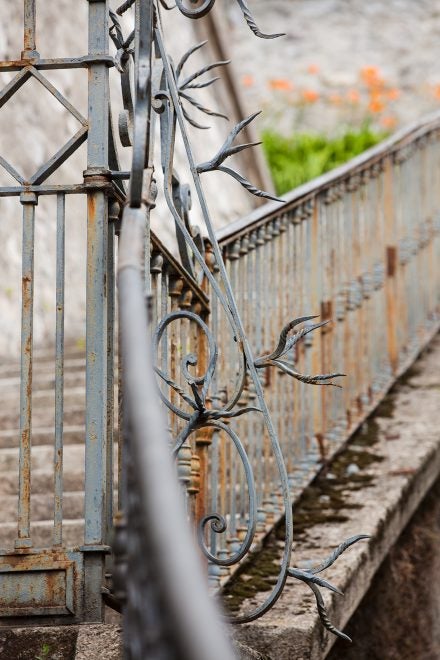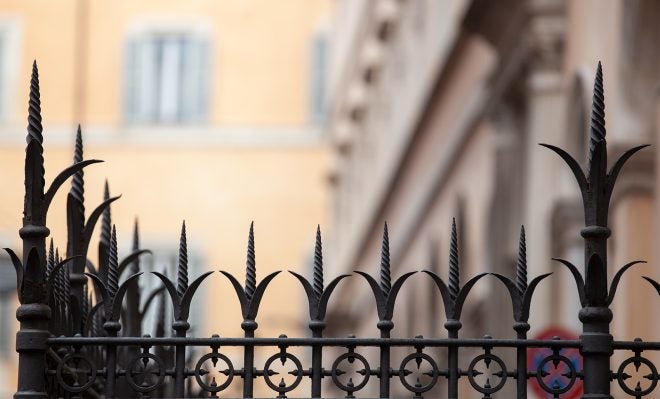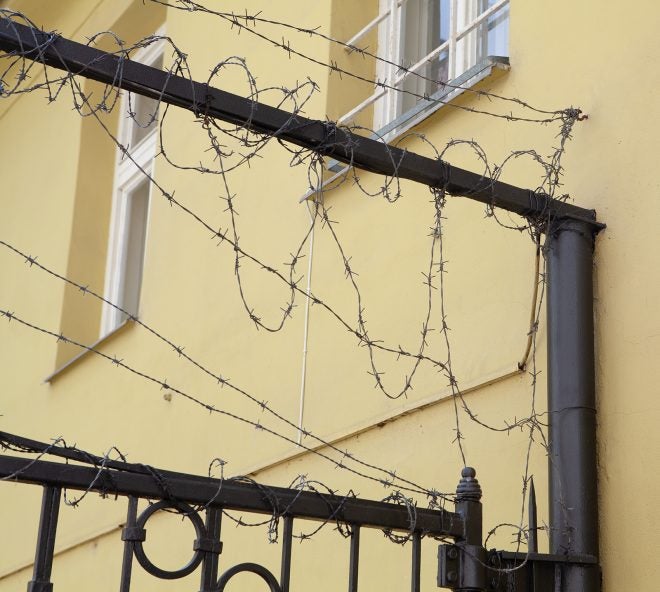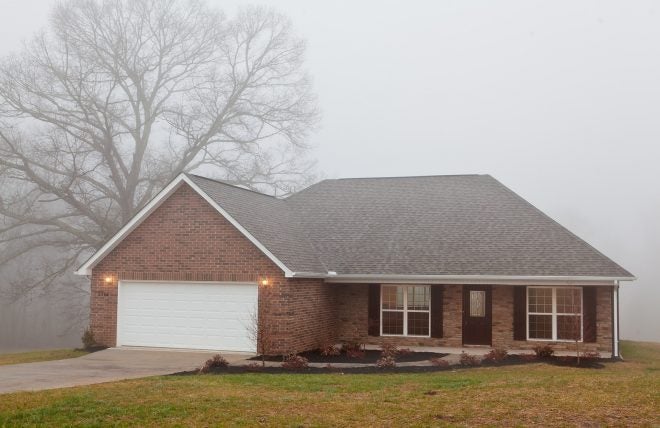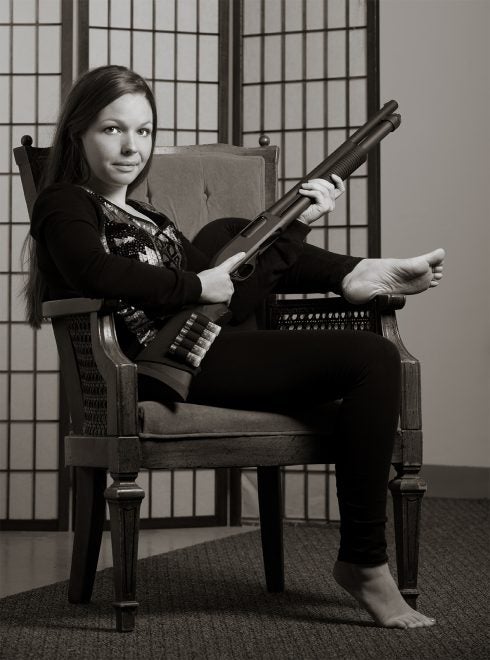How Safe is Your Area?
Oleg Volk 08.12.18

In traveling through Europe, I couldn’t help noticing just how much people there spend on defensive fortifications. They image above is from Como, Italy — one of the fanciest resorts of the country. The fence with sharp spikes goes around one of the large estates in the most expensive part of town by the lake.
A slightly less fancy but still respectable town slightly North of Como has this kind of gates leading to regular homes in downtown. The spikes were definitely meant to be more than just decorative. Curiously, this kind of defenses are missing on the Swiss side a couple of miles away.
In Rome, this is how government buildings are separated from the street. That’s not too dissimilar from how the US governments do it. What is different is that most apartment building and private homes had similar fences, and also grated windows on both first and second floors.
An average city house in Prague has cheaper barbed wire instead of spikes. Windows on first and second floors are likewise protected with iron grates, adding to the hazards in case of fire.
A typical suburban home in the US does not have such defenses. We can see large windows without grating, a door with a glass inset, and the back deck has a completely glass door leading to it. Is US law enforcement so much more capable of instant response to a break-in?
Back when I lived in the USSR, people who were burglarized were generally happy that the break-in happened in their absence. The well-founded fear was that a break-in of an occupied dwelling would turn into a beating, rape and, possibly, murder of the residents. In the US, a typical lament of those who do get burglarized is: “I wish we were home that evening!” Perhaps the lesser frequency of home invasions in the US relative to burglaries is because criminals try to avoid defensive gunfire delivered by residents. Surveys of prisoners confirm that theory.
Even in very restrictive states, residents can usually get their hands on some type of a firearms. The culture overall supports the use of arms for home protection. Passive defenses, such as metal grates on windows and fences, are sometimes found but only in the least savory parts of the country. By contrast, even the nicest parts of Italy seem to require them. That is done at a considerable cost, with funds better spent elsewhere but for the threat of crime. Thus, a $250 shotgun in the hands of a lawful resident makes all kinds of Maginot lines less necessary.
The degree to which buildings are hardened against entry are one indicator. Another is just how many or few women are out after dusk. In Strasbourg and Paris, they suddenly became very uncommon after nightfall, while men were out in great numbers. I have a faint suspicion that the amount of crime and the lack of legal personal defense tools had something to do with this as well.
